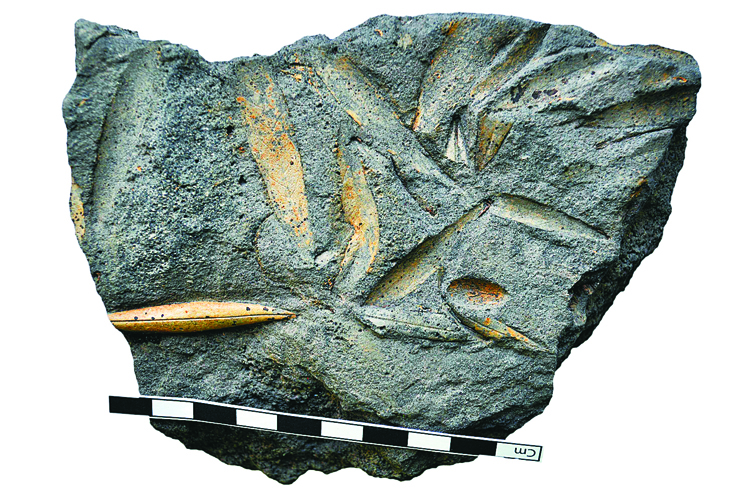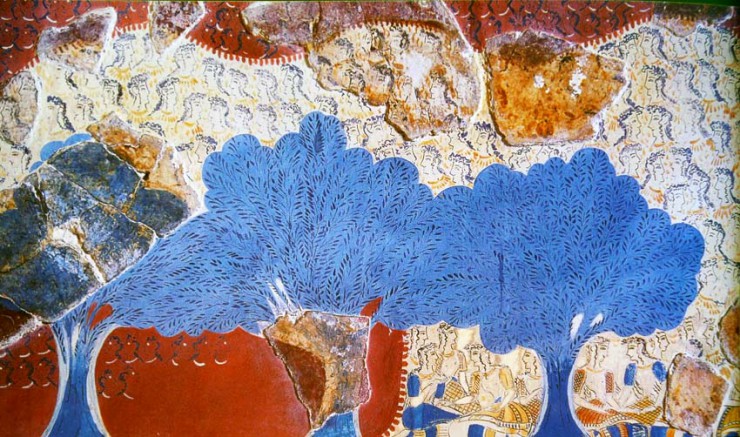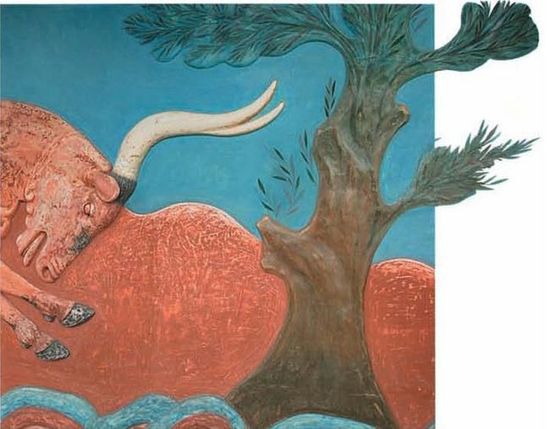The Olive Tree in Greece and Lesvos
A 5,000-years old story
The prehistoric times
The olive tree (Olea europaea L.) is one of the most ancient cultivated trees in the Eastern Mediterranean region. Its presence at the Aegean Sea ever since the Pleistocene Period is witnessed by fossilized leaves from Santorini and Nisyros as well as charcoal and pollen from Lesvos (Megali Limni [Eng. Big Lake]), dated 50,000 to 60,000 years ago.

The Fossilized Leaves of Santorini
Excavation findings and archaeobotanological evidence dated to the Bronze Age (3,200-2,000 BCE) document the early usage and exploitation of the olive tree throughout the broader Hellenic region (Crete, Cyclades, Northeast Aegean, Cyprus, mainland Greece) and in Lesvos (anc. Gr. Thermī); in many instances—including Thermī—these data indicate small-scale household production of olive oil.
In the course of the second millennium BCE, and particularly during the late Bronze Period (1580-1050 BCE), the usage and exploitation of the olive tree was widely spread, leading to the eventual domestication of the wild-olive (Olea oleaster). The gathering of olive crops and an extensive production of olive oil is encountered in both Crete and Mycenaean Greece within the framework shaped by the powerful central administrations for the control of production and provision of primarily aromatic oils.

Mural depicting an olive grove (Knossos Palace)

“The olive tree and the bull” mural (Knossos Palace, north entrance)
The reports found on the Linear A and, primarily, Linear B plates are indisputable testimonies of the qualitative and quantitative characteristics, the usages and the cultural and religious value of the olive tree, as well as of the fact that the oil produced from the olive trees hardly amounted to the 25% of the total production. This is indicative of the degree of domestication of the wild olive, as well as its limited use for people’s daily needs. In Lesvos, the excavating findings from Thermī during the second millennium (Thermī VI) indicate significant Mycenaean influences in the period prior its abandonment in 1200 BCE—indicatory of the development of trade links and concomitant cultural influences.



